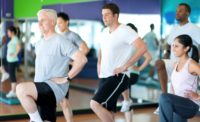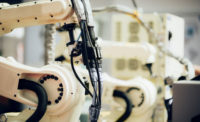Even astronauts in space should exercise regularly

A health problem that has plagued astronauts returning from space – and some earthbound people as well – is lessened by daily exercise, researchers have found. Orthostatic hypotension - a temporary drop in blood pressure occurring when a person stands up after sitting or lying down - has caused newly returned astronauts to faint or feel dizzy. The condition, in which blood rushes to the feet and away from the brain, can occur after lengthy bed rest, among people with certain health disorders or, in the case of astronauts, spending time in a low-gravity environment.
“One of the biggest problems since the inception of the manned space program has been that astronauts have fainted when they came down to Earth. The longer the time spent in a gravity-free environment in space, the greater the risk appeared to be,” said Benjamin Levine, M.D., who is professor of Exercise Sciences at UT Southwestern Medical Center and director of the Institute for Exercise and Environmental Medicine at Texas Health Presbyterian Hospital in Dallas. “This problem has bedeviled the space program for a long time, but this condition is something ordinary people often experience as well.”
Levine is the senior author a study appearing in the American Heart Association’s journal Circulation involving a dozen astronauts who spent six months in space found that exercising in space put them on a stable footing when they were back on terra firma. The exercise was intense; the subjects performed individualized endurance and resistance exercise training for up to two hours daily during space flight to prevent cardiovascular, bone and muscle deconditioning. They also received a saline infusion upon landing.
The astronauts’ blood pressure was recorded with every heartbeat over each 24-hour period before, during and after their time in space. The researchers found that there was minimal impact on their blood pressure during all phases of measurement and none of the astronauts in the study experienced dizziness or fainting during routine activities 24 hours after landing.
“What surprised me the most was how well the astronauts did after spending six months in space. I thought there would be frequent episodes of fainting when they returned to Earth, but they didn’t have any. It’s compelling evidence of the effectiveness of the countermeasures—the exercise regimen and fluid replenishment,” he said.
This is the first study to demonstrate that astronauts do not experience dizziness or fainting during routine activity after landing, as long as they participate in certain types of exercise training while in flight and receive IV fluids when they return to earth, said Levine
The study did have a few limitations: the sample size was small, and researchers couldn’t tell if in-flight blood pressure readings occurred while the astronauts were awake or asleep. The latter meant that data was combined and examined over 24-hour periods. Since all the astronauts participated in the exercise regimen and received a saline fluid infusion upon landing, researchers do not know if the blood pressure stabilization would have occurred without those measures.
Next, the researchers would like to study larger numbers of astronauts and those who spend longer than six months in space.
“Understanding the physiology of space flight can be helpful for understanding many conditions experienced by non-astronauts. For example, the exercise program our lab developed for the space program is already helping people with a fainting condition known as postural orthostatic tachycardia syndrome (POTS),” Levine said. “As we prepare to celebrate the 50th anniversary of the Apollo 11 moon landing, it’s exciting to think of how our exploration in and of space can lead to important medical advances here on Earth.”
Co-authors are Qi Fu, M.D., Ph.D.; Shigeki Shibata, M.D. Ph.D.; Jeffrey L. Hastings, M.D.; Steven H. Platts, Ph.D.; Douglas M. Hamilton, M.D.; Michael W. Bungo, Ph.D.; Michael B. Stenger, Ph.D.; Christine Ribeiro, J.D., M.S., and Beverly Adams-Huet, M.S.
Author disclosures are on the manuscript. The study was funded by a NASA grant to Drs. Levine and Bungo.
Looking for a reprint of this article?
From high-res PDFs to custom plaques, order your copy today!







